Teano. Church of the Annunziata
2021
You may also like
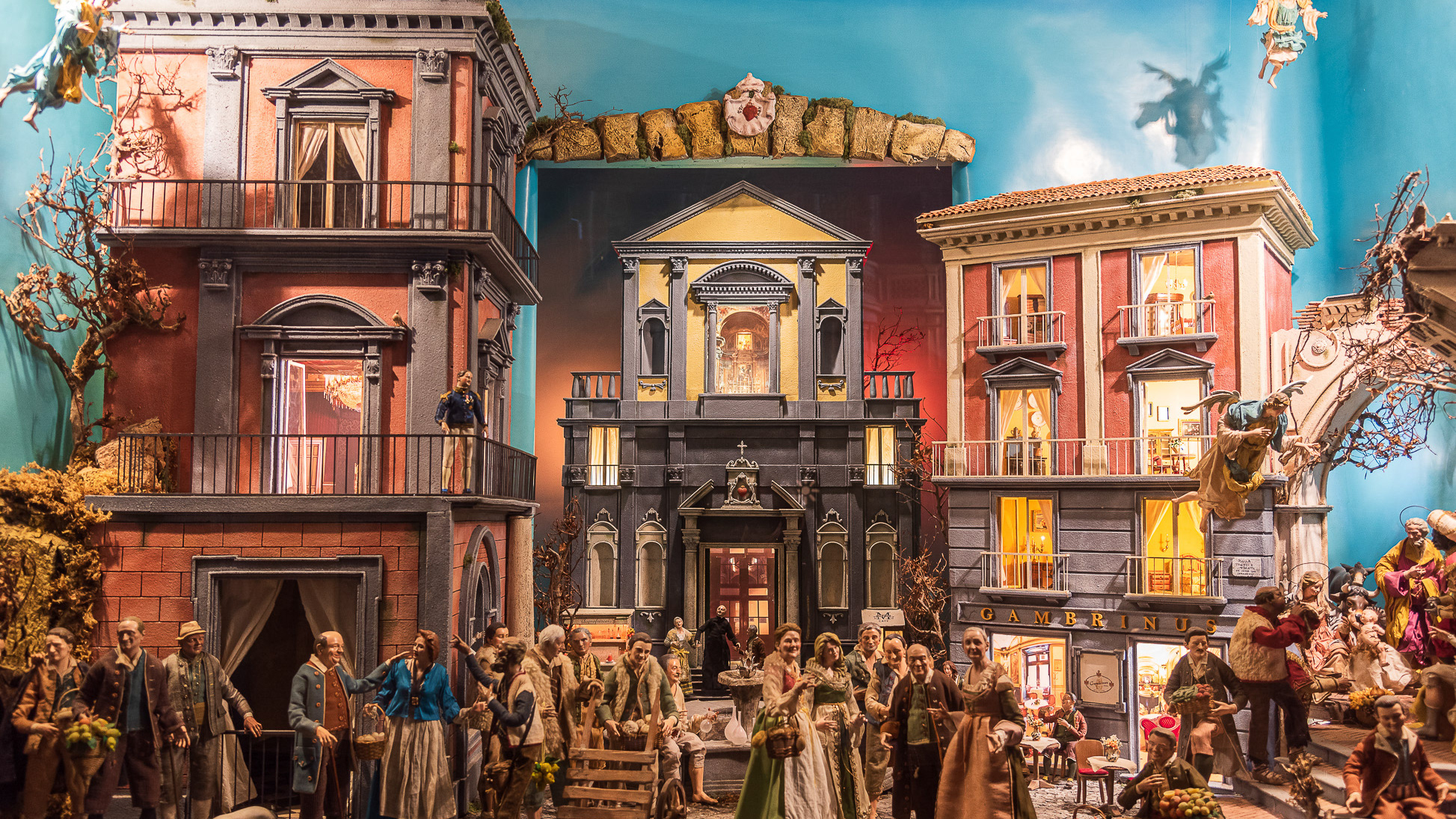
2023
Naples. The church of San Ferdinando
The church of San Ferdinando is a monumental church in Naples located in the historic center of the city, in Piazza Trieste e Trento.
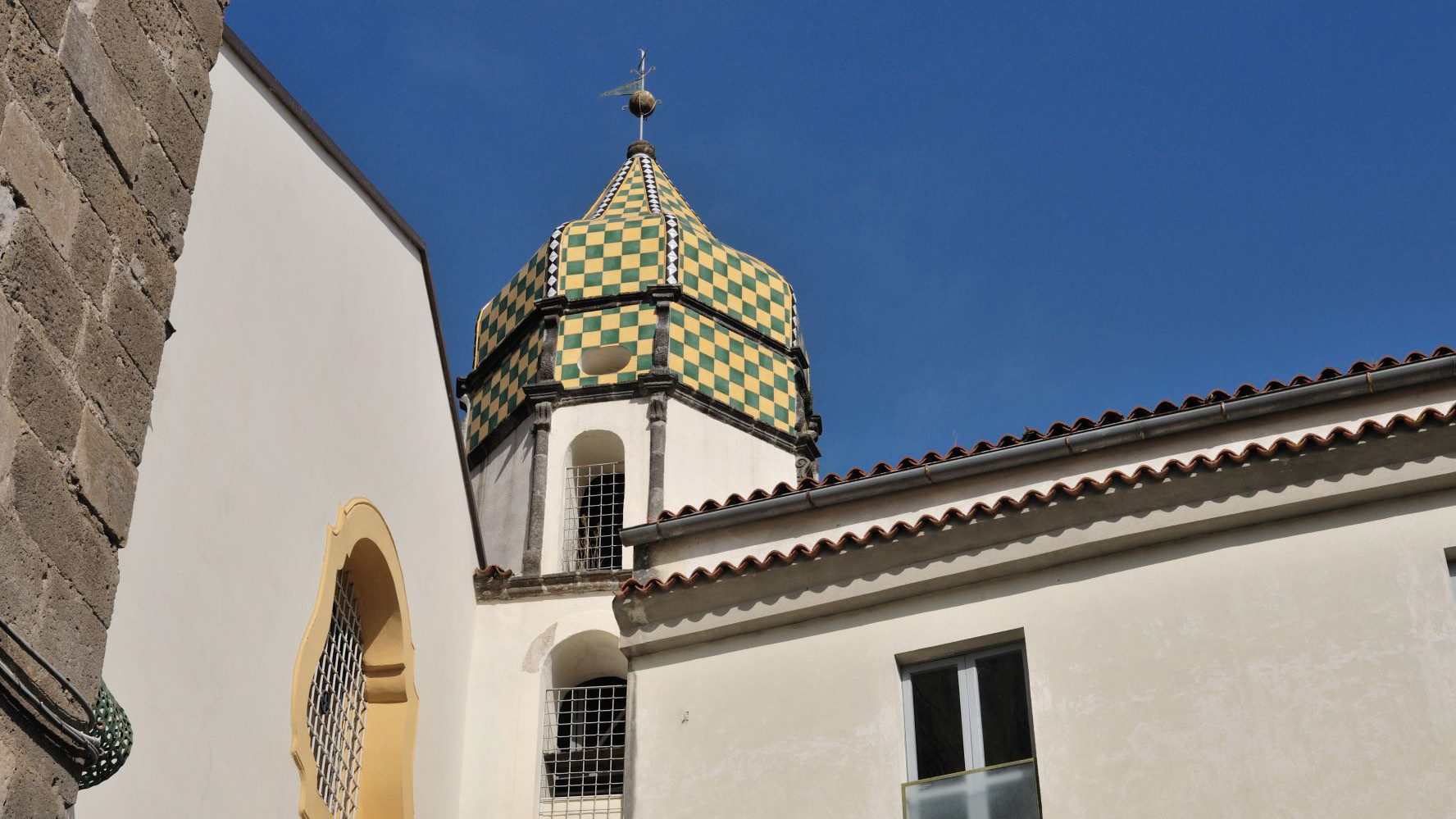
2021
Teano. Monastery of Santa Caterina
2022
Teano. Church of San Francesco.
Teano. Church of San Francesco. Built in the fourteenth century, in Gothic style, by the Conventual Minors it was extensively remodeled in the Baroque age.

2024
The Avalos castle of Vairano Patenora
The Avalos castle of Vairano Patenora is a square-shaped building with stone perimeter walls and four cylindrical corner towers. it was built by Ripandulf VI in the 11th century.
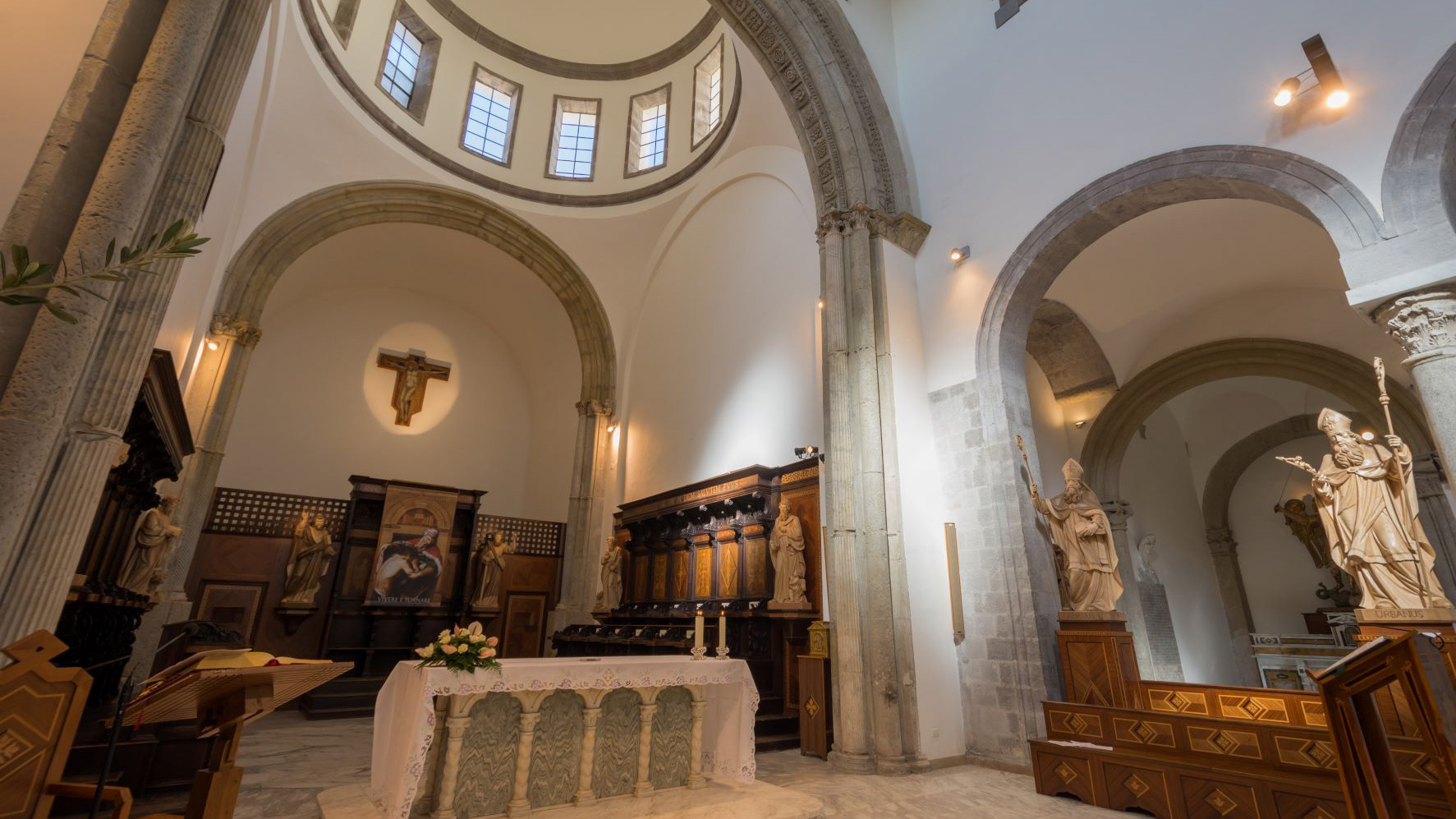
2021
Teano. The Dome. The Apse
The cathedral, originally dedicated to San Terenziano, was later named after San Clemente. Construction began in 1050 by Bishop Guglielmo, to replace the old cathedral of San Paride ad Fontem, located outside the city walls. The works were completed in 1116 by Bishop Pandulfo. The building has a basilica structure divided into three naves by two rows of columns. In 1608 it was damaged internally by a fire that almost completely destroyed the cosmates ambo, subsequently recomposed using the remains of the previous one integrated with the marble slabs of a fourteenth-century sepulchral monument already present in the church and positioned on twisted columns, two of which rested on fountain lions. During the 16th century the Romanesque apse was modified and on that occasion a precious carved wooden choir was built in the presbytery, built in 1539 by the Benedictine Antonio Maria Sertorio. The choir underwent two restorations, the first in the 17th century and the second in 1957, following the damage suffered during the Second World War.
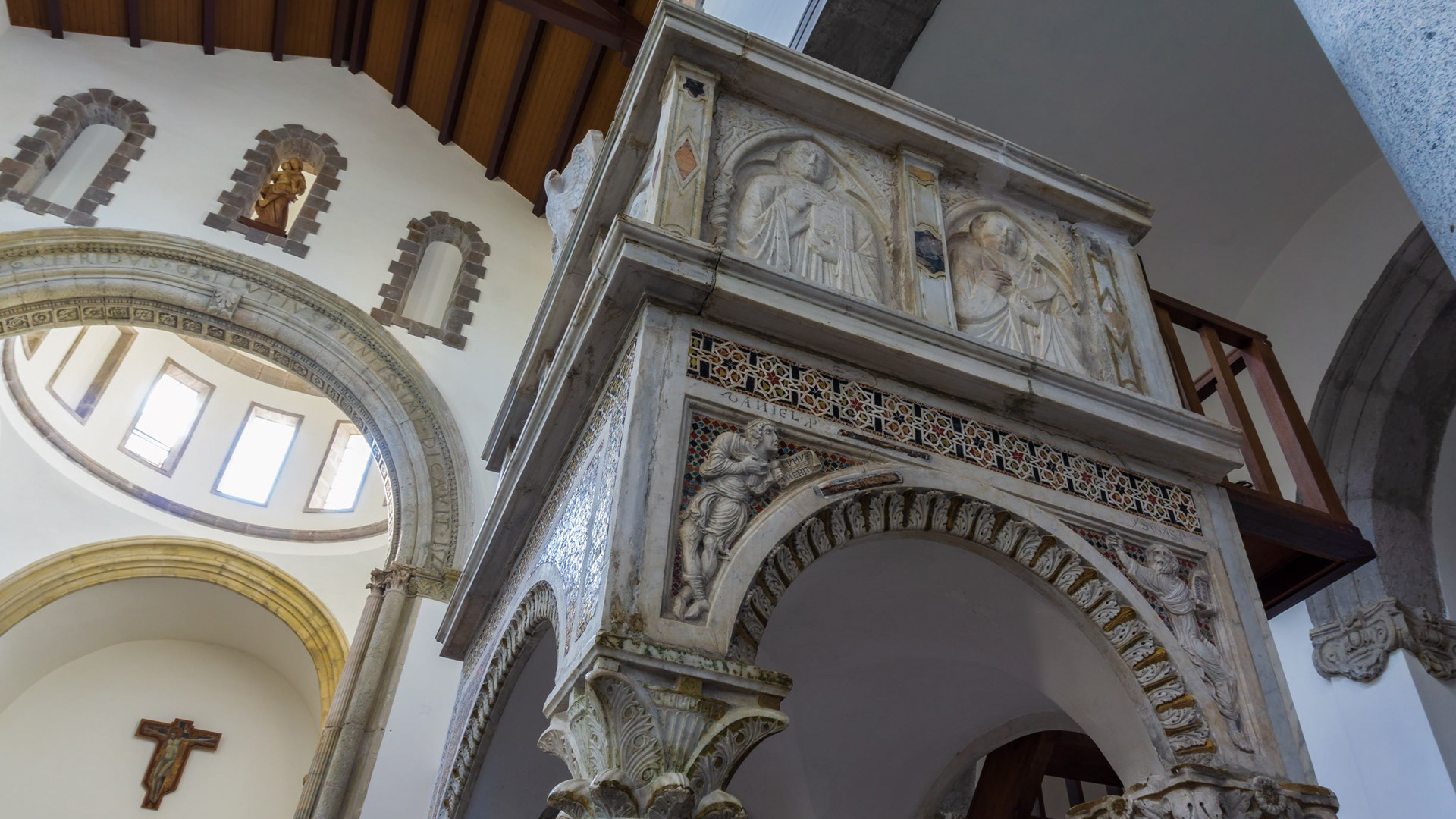
2020
Teano. The Cathedral. The Pulpit
The cathedral, originally dedicated to San Terenziano, was later named after San Clemente. Construction began in 1050 by Bishop Guglielmo, to replace the old cathedral of San Paride ad Fontem, located outside the city walls. The works were completed in 1116 by Bishop Pandulfo. The building has a basilica structure divided into three naves by two rows of columns. In 1608 it was damaged internally by a fire that almost completely destroyed the cosmates ambo, subsequently recomposed using the remains of the previous one integrated with the marble slabs of a fourteenth-century sepulchral monument already present in the church and positioned on twisted columns, two of which rested on fountain lions. During the 16th century the Romanesque apse was modified and on that occasion a precious carved wooden choir was built in the presbytery, built in 1539 by the Benedictine Antonio Maria Sertorio. The choir underwent two restorations, the first in the 17th century and the second in 1957, following the damage suffered during the Second World War.
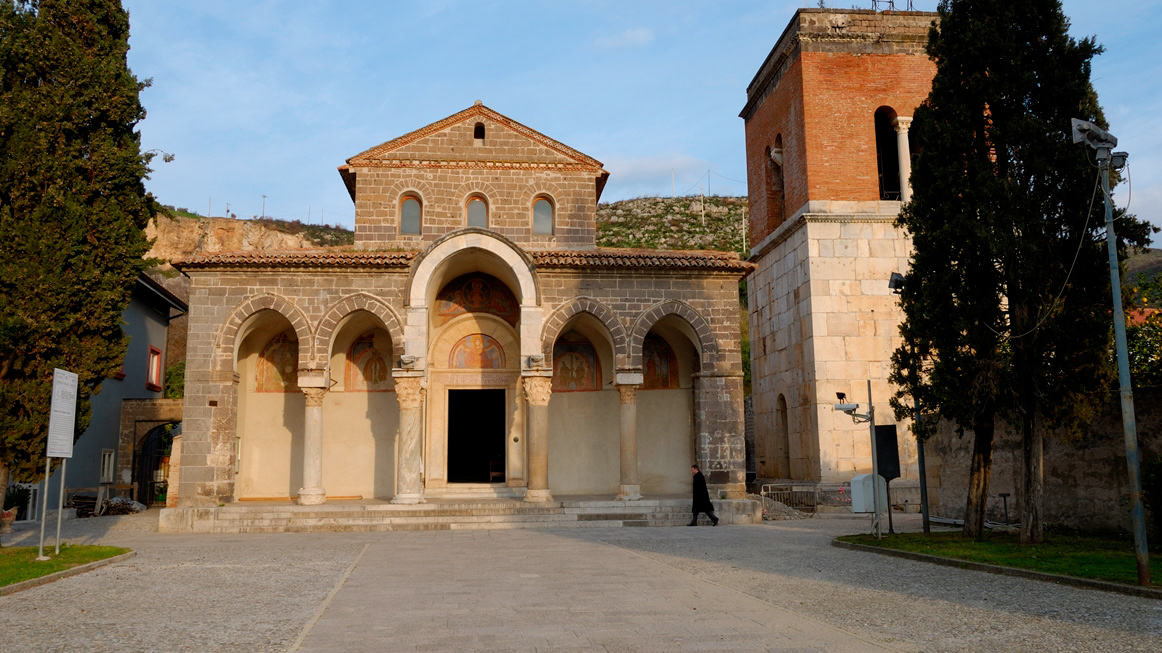
2008
Benedictine Abbey of S. Angelo in Formis
The church, dedicated to San Michele Arcangelo, rises along the western slope of Mount Tifata. Initially in the documents the building is indicated as ad arcum Dianae ("at the arch of Diana"), recalling that it stood above the remains of the temple dedicated to this divinity, while later it is referred to with the denominations ad Formas , Informis or in Formis. The etymological interpretation of the new name is controversial: on the one hand, the hypothesis is that it derives from the Latin term forma ("aqueduct"), and that it indicates the proximity of a conduit or aquifer; while on the other hand the term is considered derived from the word informis ("formless", and therefore "spiritual"). The remains of the Roman temple were found in 1877, and it has been noted that the basilica retraces its perimeter, adding the apses at the end of the aisles. The first construction of the basilica can be traced back to the Lombard period, on the basis of the widespread diffusion of the cult of the archangel Michael among the Lombards at the end of the sixth century. At the time of the bishop of Capua Pietro I (925-938), the church was donated to the monks of Montecassino, who wanted to build a monastery there. The church was then taken from the monks and given back to them in 1072 by the prince of Capua, Riccardo. The then abbot Desiderio di Montecassino (the future Pope Victor III) decided to rebuild the basilica (1072 - 1087) and still respected the architectural elements of pagan origin. To him we owe the frescoes of the Byzantine-Campanian school that decorate the interior and which constitute one of the most important and best preserved pictorial cycles of the time in southern Italy. The reconstruction of the portico in front of the church, with new frescoes, and a reconstruction of the bell tower following a collapse have been attributed to the 12th century
2022
Caserta, the Royal Palace. The English Garden.
The Royal Palace of Caserta is a royal residence, historically belonging to the Bourbons of the Two Sicilies, located in Caserta. Commissioned by Charles of Bourbon, the laying of the first stone, which started the construction work, took place on January 20, 1752, based on a project by Luigi Vanvitelli: this was followed by his son Carlo and other architects. The palace was completed in 1845.
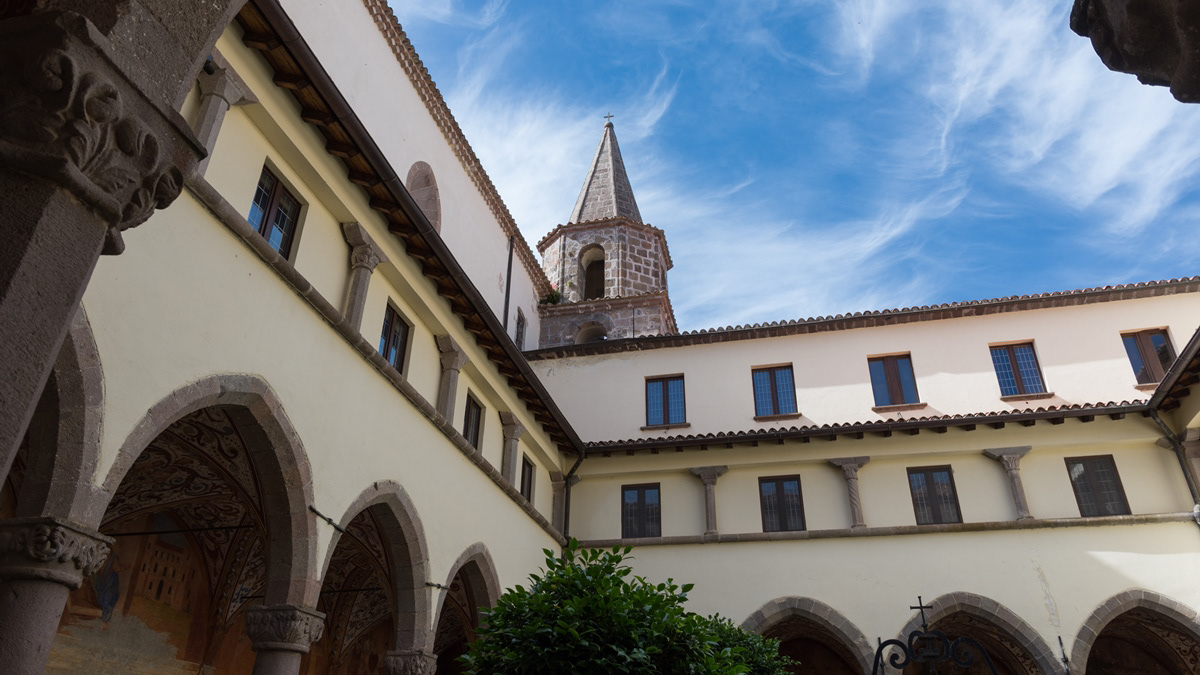
2018
Roccamonfina, sanctuary of Maria SS dei Lattani
The sanctuary of Maria Santissima dei Lattani is a Marian sanctuary located in the territory of the municipality of Roccamonfina, in Campania, the place of death of the bishop Giacinto Tamburini. The sanctuary was founded in 1430 by San Bernardino da Siena and San Giacomo della Marca, who had arrived there following the news of the discovery of a statue of the Virgin in the same or the previous year. A first rural chapel was built, then a first church, enlarged shortly after in its present form between 1448 and 1507. In 1446 Pope Eugene IV entrusted the convent, which had risen in the meantime, to the Franciscans. In March 1970 the sanctuary was elevated by Pope Paul VI to the dignity of a minor basilica. The buildings of the sanctuary open onto a large internal courtyard, opening onto the panorama. It is overlooked by the church, the convent and a building built at the time of its foundation, called "Protoconventino" or "hermitage of San Bernardino", recently restored in its original form. The facade of the church, preceded by a large porch with a round arch, preserves the original wooden door of 1507. The interior, with a single nave, divided into spans by pillars that support the cross vault with a lowered pointed arch, preserves 15th and 18th century frescoes and Gothic windows with polychrome stained glass. On the left opens the chapel dedicated to the Virgin of the Lattani, with a frescoed dome, which houses a statue of the Madonna and Child in basalt stone, covered with polychrome painting, perhaps attributable to the 9th century. The convent has a façade with arched portico and inside a rectangular cloister with pointed arches supported by small columns, of various shapes, on two floors. There are 17th century frescoes painted by his father Tommaso di Nola. The refectory opens onto the cloister. The so-called "Protoconventino" building overlooks the internal courtyard with a two-storey loggia, open to the valley with windows, the lower one decorated with a rose window. In the courtyard there is also a stone fountain and on the side facing the mountain a fifteenth-century fountain decorated in 1961 by a representation on colored ceramic.
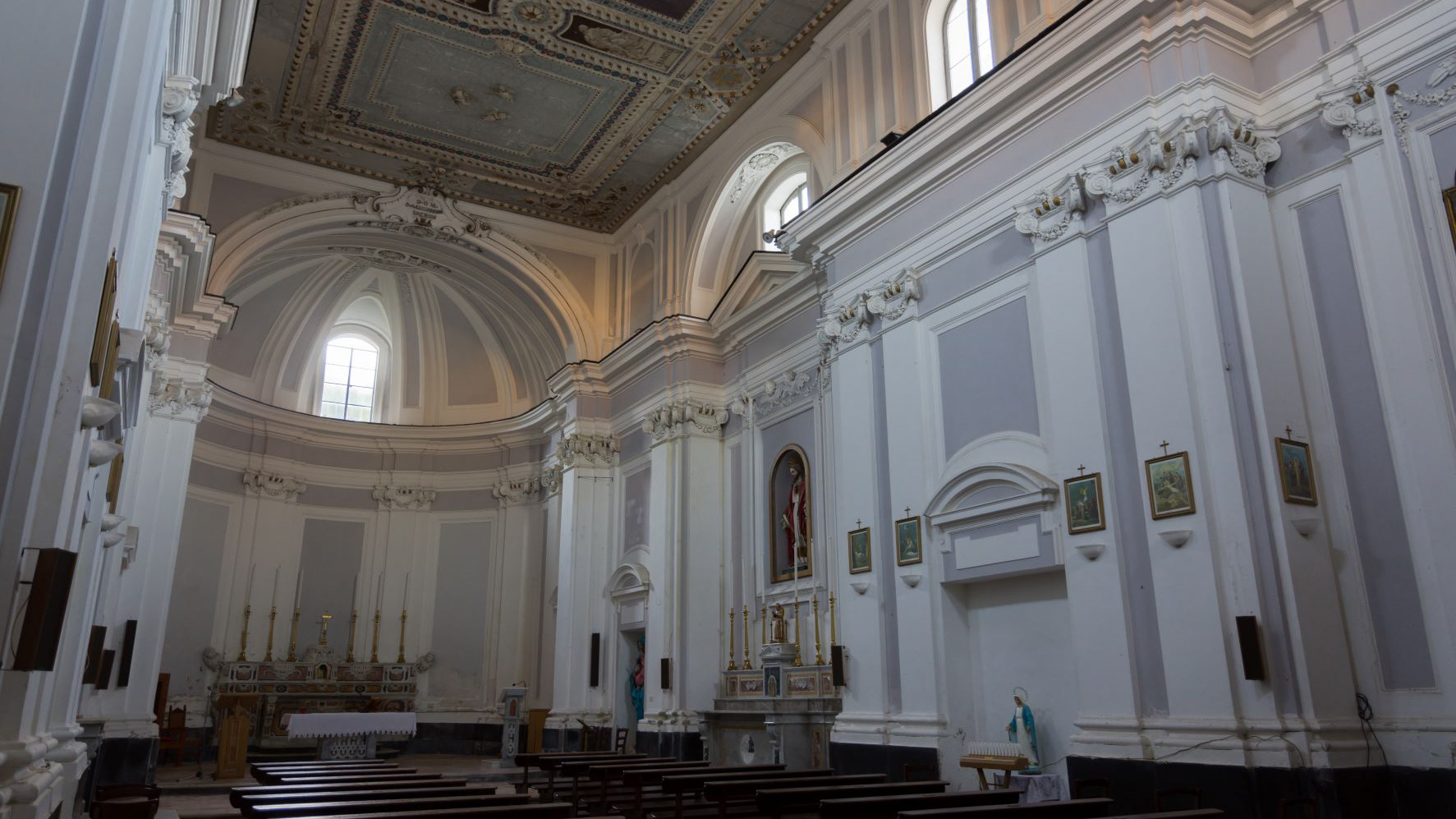
2021
Teano. Church of Sant’Agostino
